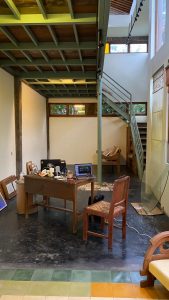On exhibition-making: shared files, folders, and GoogleSheet #notsponsored
by Rachel K. Surijata
What’s right in front of me at the moment is a GoogleDocs file titled On exhibition-making_rachel, inside a folder named JB2021 BLOG curatorial, which is inside yet another folder named JB2021 ESOK Curatorial Process. These folders are shared to all members of the Jakarta Biennale team, but they won’t get a notification saying that I have added yet another file in this folder. So for now, I get to keep this document a little secret for myself. But then why do it here, in a shared cloud?
The same question can probably be asked about each and every single file in our shared folder. And trust me, there are many. The JB2021 ESOK Curatorial Process folder is the home of all things that our Curatorial Team does. Excuse my fascination, but really anything and everything – from the rough ideas, reading materials, concepts, exchanges amongst the curators, curators’ presentations when the biennale was still planned for 2020, email drafts, meeting agendas and summaries, to the notes of every single meeting we’ve had with every single artist since Chita and I started working for the biennale earlier this year – are all in there.

For me, exhibition-making at this point in the biennale preparation is filling in the gaps. Some of these gaps are filled as I talk to more people and face new experiences, but ‘filling in the gaps’ sometimes also meant literally, like our shared GoogleSheet titled JB2021 ESOK – Artists’ checklist can testify. At this point of our process, this file is our central command and home for all artist-related information. Have we sent our formal invitation letter? Have we received the Artist Participation Confirmation form? Where is the invoice at? With us or have we sent it to the Finance Department or is it already transferred? When is our next meeting? What do we have to do, or find out, before that meeting? How can the artistic team help the artists for their work production or installation? What are the technical riders of each artists’ presentation? What’s everyone’s email address and phone numbers? Whose in charge for which project/artists? And everything else from tending artists general as well as particular needs.
As I look over this file, I can see that the notes, or the filled-in gaps, are proof that we are well on our way in exhibition-making for this biennale. The Details sheet in this file for example, records the summary of venue preference, artwork plans, production support, and display requirements for each artist. Chita and I fill these gaps in as we are present in conversations between the curatorial team and artists, mainly through Zoom, and as we are CC-ed in all of their email exchanges. A few rows which are connected to each artists’ are filled more than others. In a way, one can say that without these gaps being filled in time, the exhibition may not happen.
Imagine waking up to 20 new emails, with different subjects, all related to one event? Not all of them are addressed to you, but you need to keep track of these conversations as it will impact your role and future decisions to make in the event organizing sense. Every individual has different ways of dealing with digital and online realities. Some would keep replying in one thread, some would forget to hit reply all, some would keep making new messages every time. There simply is no time to synchronize the way people keep their files, reply to their emails, or send attachments via Google Drive, WeTransfer, Dropbox, or whatever cloud services it is that they use. This GoogleSheet file that I have been talking about, JB2021 ESOK – Artists’ checklist, simply consolidates all of these scattered information, be it coming from emails, meetings on and offline, consultation with the bigger team, agreements, concepts, bios, statements, shipping, installation, you name it. My own practice of filling-in these gaps is by no means perfect, sometimes it still takes other people to ask or poke me about certain details that I didn’t even think to address or I have yet to update in the sheet.
And so going back to the question I pose in the beginning of this text, why do this in a shared cloud, perhaps it’s been answered best by what others have said on this platform: because “What would always be there is other people’s presence, in all aspects of the processes.” and because “Despite having our own assigned task to each of our roles, don’t we have shared responsibilities in making the exhibition actually happen?” Though especially for me, this is my first exhibition-making experience. I had only started at the beginning of this year. Never had I experienced any exhibition-making process prior to the pandemic. To share a working file in the cloud is a way to open our thinking and working process to the whole team. Surely not everyone would constantly check what you are doing and certainly one can’t expect everyone to work the same way. But perhaps we can think about it differently… Imagine working in the same office space and being able to get a glimpse of other colleagues’ screens while you pass by on the way to your cigarette break or going to the loo. Or when you thought of poking them to get lunch together or hang out after office hours, and you’d know what they were doing. If they were doing something that is within your capacity, or directly related to your department, you’d definitely help or comment or think aloud at that moment in time. So for now, to work in a shared cloud, and to be able to write spontaneous comments in the file, is as close as I can imagine to working with people in actual spaces.
///
When I finished this text a month ago on August 11th, the GoogleDocs file it lives in stopped being a secret as I shared it to the curatorial team group chat. I wasn’t very happy about the text then, and had doubts whether I could ever finish writing it. After I expressed this to the team, I took Grace Samboh’s offer to help and so I’d like to say thank you to her for finding the words to express my thoughts! Thanks also to the team for making sure the website runs, the blog programme keeps going, and the publications for it happen. We make this blog happen together indeed, though it is me who gets the satisfaction of giddily ticking a checkbox in our shared JB Blog tracker GoogleSheet file 😉
